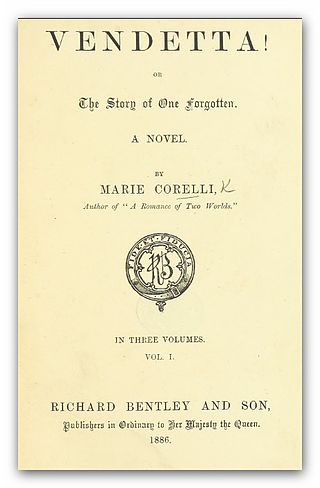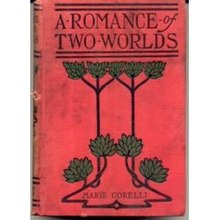
Gothic fiction, sometimes called Gothic horror, is a loose literary aesthetic of fear and haunting. The name refers to Gothic architecture of the European Middle Ages, which was characteristic of the settings of early Gothic novels.

Georgette Heyer was an English novelist and short-story writer, in both the Regency romance and detective fiction genres. Her writing career began in 1921, when she turned a story conceived for her ailing younger brother into the novel The Black Moth. In 1925 Heyer married George Ronald Rougier, a mining engineer. The couple spent several years living in Tanganyika Territory and Macedonia before returning to England in 1929. After her novel These Old Shades became popular despite its release during the General Strike, Heyer determined that publicity was not necessary for good sales. For the rest of her life she refused to grant interviews, telling a friend: "My private life concerns no one but myself and my family."

Ann Radcliffe was an English novelist and a pioneer of Gothic fiction. Her technique of explaining apparently supernatural elements in her novels has been credited with gaining respectability for Gothic fiction in the 1790s. Radcliffe was the most popular writer of her day and almost universally admired; contemporary critics called her the mighty enchantress and the Shakespeare of romance-writers, and her popularity continued through the 19th century. Interest in Radcliffe and her work has revived in the early 21st century, with the publication of three biographies.

Mary Mackay, also called Minnie Mackey and known by her pseudonym Marie Corelli, was an English novelist.

A romance novel or romantic novel is a genre fiction novel that primary focuses on the relationship and romantic love between two people, typically with an emotionally satisfying and optimistic ending. Authors who have contributed to the development of this genre include Samuel Richardson, Jane Austen, and Charlotte Brontë.

Janet Evanovich is an American writer. She began her career writing short contemporary romance novels under the pen name Steffie Hall, but gained fame authoring a series of contemporary mysteries featuring Stephanie Plum, a former lingerie buyer from Trenton, New Jersey, who becomes a bounty hunter to make ends meet after losing her job. The novels in this series have been on The New York Times, USA Today, Wall Street Journal and Amazon bestseller lists. Evanovich has had her last seventeen Plums debut at #1 on the NY Times Best Sellers list and eleven of them have hit #1 on USA Today Best-Selling Books list. She has over two hundred million books in print worldwide, and her books have been translated into over 40 languages.
Mills & Boon is a romance imprint of British publisher Harlequin UK Ltd. It was founded in 1908 by Gerald Rusgrove Mills and Charles Boon as a general publisher. The company moved towards escapist fiction for women in the 1930s. In 1971, the publisher was bought by the Canadian company Harlequin Enterprises, its North American distributor based in Toronto, with whom it had a long informal partnership. The two companies offer a number of imprints that between them account for almost three-quarters of the romance paperbacks published in Britain. Its print books are presently out-numbered and out-sold by the company's e-books, which allowed the publisher to double its output.
Patricia Nead Elrod is an American novelist specializing in urban fantasy. She has written in the mystery, romance, paranormal, and historical genres with at least one foray into comedic fantasy. Elrod is also an editor, having worked on several collections for Ace Science Fiction, DAW, Benbella Books, and St. Martin's Griffin. She self-published a signed, limited edition novel under her own imprint, Vampwriter Books.

Clara Reeve was an English novelist best known for the Gothic novel The Old English Baron (1777). She also wrote an innovative history of prose fiction, The Progress of Romance (1785). Her first work was a translation from Latin, then an unusual language for a woman to learn. She was a near-contemporary of the bluestockings ladies of Elizabeth Montague's circle.

Wormwood: A Drama of Paris is an 1890 novel by Marie Corelli. It tells the sensational story of a Frenchman, Gaston Beauvais, driven to murder and ruin by the potent alcoholic drink absinthe.

Kathleen E. Woodiwiss was an American novelist. She pioneered the historical romance genre with the 1972 publication of her novel The Flame and the Flower.

Historical romance is a broad category of mass-market fiction focusing on romantic relationships in historical periods, which Walter Scott helped popularize in the early 19th century.

The Flame and the Flower is the debut work of romance novelist Kathleen E. Woodiwiss. The first modern "bodice ripper" romance novel, the book revolutionized the historical romance genre. It was also the first full-length romance novel to be published first in paperback rather than hardback.
Reading the Romance is a book by Janice Radway that analyzes the Romance novel genre using reader-response criticism, first published in 1984 and reprinted in 1991. The 1984 edition of the book is composed of an introduction, six chapters, and a conclusion, structured partly around Radway's investigation of romance readers in Smithton and partly around Radway's own criticism. Radway herself expresses preference for reader-response criticism throughout the course of the book, as opposed to the popular new criticism during the 1980s.

Irish Thoroughbred is American author Nora Roberts's debut novel, originally published by Silhouette in January 1981 as a category romance. Like other category romances, the novel was less than 200 pages and was intended to be on sale for only one month. It proved so popular that it was repackaged as a stand-alone romance and reprinted multiple times. Roberts wrote two sequels, Irish Rebel and Irish Rose.

Vision in White is the first book of the Bride Quartet series of romance novels, written by Nora Roberts. It spent two weeks atop the New York Times Bestseller List and reached number 3 on the USA Today bestseller list, marking the first time one of Roberts' books had become a bestseller in trade paperback format. A downloadable casual-play computer game based on the book was introduced by I-Play in 2010.

Gail Carriger is an author of steampunk fiction and an American archaeologist. She was born in Bolinas, an unincorporated community in Marin County, California, and attended high school at Marin Academy. She received her undergraduate degree from Oberlin College, a masters of science in archaeological materials at England's University of Nottingham in 2000, and a master of arts in anthropology at the University of California Santa Cruz in 2008. She is a 2010 recipient of the Alex Awards.

Sherry M. Thomas is an American novelist of young adult fantasy, historical romance, and contemporary romance. She has won multiple awards including the Romance Writers of America RITA Award for Best Historical Romance for Not Quite a Husband in 2010 and His at Night in 2011. Most best-of-romance lists include one of her titles.

Lord of Scoundrels is a Regency romance novel by American author Loretta Chase. Published in 1995 by Avon Books, it is the third installment of her Débauchés series. Set in 1828, the story follows the Marquess of Dain, an aristocrat known as "Lord Beelzebub" and the "Lord of Scoundrels" for his unscrupulous, immoral behavior. The son of an English father and Italian mother, Dain is hardened due to a difficult childhood and meets his match in Jessica Trent, a 27-year-old bluestocking more than capable of trading wits with him.

Vendetta!, or The Story of One Forgotten is an 1886 romance by Marie Corelli. Corelli's second novel, it tells the story of an Italian count who, after being mistakenly declared dead, returns home to find his wife romantically involved with his best friend and seeks revenge on them both. The book was a popular success, but received tepid notices from critics.















